From the West Hartford Archives: Highland Creamery at Mountain Road and Albany Avenue

Audio By Carbonatix
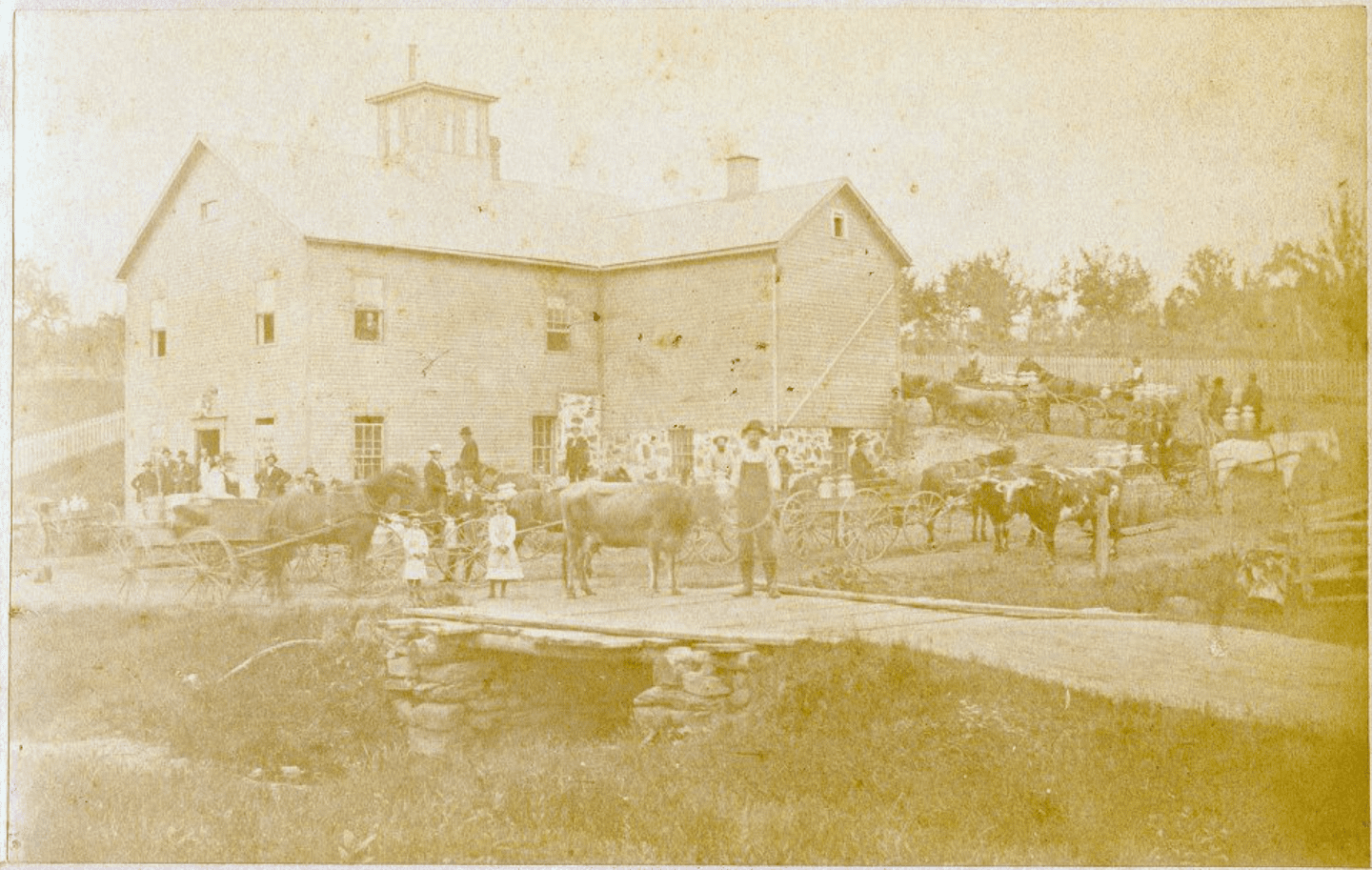
Highland Creamery. Photo courtesy of Ray Petersen
Historian Jeff Murray takes a look into West Hartford’s past to uncover some surprising information, stir up some memories, or reflect on how much life has changed – or hasn’t changed at all. Enjoy this week’s ‘From West Hartford’s Archives’ …
By Jeff Murray
This is a view of the Highland Creamery building at the southwest corner of Albany Avenue and Mountain Road. A branch of Trout Brook can be seen crossing Mountain Road under a makeshift bridge to pass across Flagg Road and head down to Fern Street.
Not to be confused with the Highland Dairy on South Highland Street a half century later, this one was founded in August 1876 to manufacture butter and cheese to be sold in Hartford.
The first shareholders and officers were all West Hartford residents in the neighborhood or just beyond. Many of these names were from big families in the area, like Goodwin, Sedgwick, Sisson, Cadwell, Whiting, Wells, and Flagg. Numerous advertisements in the local Hartford Courant shows city grocers stocking up on and selling butter from the creamery (in 1879, butter was 28 cents a pound).
The butter-making work was supervised by A. J. Hunt since 1890, with churning being done by steam power. The cream was gathered daily from 22 local farmers in West Hartford and Bloomfield and over 700 pounds of butter was produced per week at its height in the 1890s. The president during this era was Emerson A. Whiting, whose family had owned a farm on the opposite side of the street at the northeast corner of Albany Avenue and Mountain Road. Emerson was born on that site across the street, as was his brother Alfred Whiting, who later moved to the east side of town and laid out what is now Whiting Lane.
When Emerson died in 1895, the farm passed to his second wife, Mary Chapman, and his step-daughter Edna Ten Eyck. The company elected Franklin Sisson the next president at the annual meeting in February 1896.
Franklin also was from an influential family. Born in Bloomfield in 1825 to Daniel L. Sisson and Elizabeth Chapman, he originally lived near Bishops Corner and moved to the northwest corner of Mountain Road and Albany Ave in the 1870s. His younger brother, Thomas Sisson, oversaw the transformation of the firm Lee & Butler (which he joined in 1843) into what became known as Sisson Drug Company, of which he was president until his death in 1907. A sister, Abigail, married into the Bishop family. His older brother, Albert Lee Sisson, helped found the Asylum Avenue Baptist Church and was honored by the city of Hartford by renaming Hubbard Street to what is now Sisson Avenue in 1873.
The Highland Creamery had an office in the building that was used as a branch of the post office and mail distributing center. James W. Pine, an African American resident who became known later in his life as a poet, was the mail carrier between the creamery building and West Hartford Center from 1890 to 1895 during its heyday.
Pine was born in Danbury in 1840 and helped organize the Sherman Guards, a black troop during the Civil War. He came to West Hartford around 1872 with his family. According to the Courant, while he was never ordained, he occasionally acted as substitute preacher of one of the white churches in Danbury in his earlier life. After he resigned as mail carrier, he was chosen as public cemetery sexton, mainly working as a grave digger. He was an active writer and recorded two volumes of poems in the early 1900s. In 1905, he had a house built at the southwest corner of Fern Street and what is now Arundel Avenue, but only lived there a few years until he died in 1907.
While not directly related to the running of the Highland Creamery, the carrying of mail was an essential service to the people in the northwest corner of West Hartford and served to link the business to the rest of its community.
By 1900, the creamery was beginning to decline as local farmers opted to sell their milk directly to Hartford rather than to the creamery for use in making butter. Retail milk dealers had steadily drawn from the company’s cream supply. In August, two of the largest patrons of cream to the business dropped out and superintendent A. J. Hunt decided to leave. In the spring of 1901, the business dissolved and its president, Franklin Sisson, sold the land and building to Haley Woodford of Avon as a house to be rented.
Of course, the first person to rent it was a retail milkman. To have the one who drove you out of business live in the house you did business in is the dairy version of claiming the spoils of war – the perfect insult to injury.
After the creamery building was converted into a house, the land passed through various hands: to Robert G. Miller in 1901; to Joseph Onwelant in 1905; to Ralph W. E. Alcott, the town physician, in 1915; to John Porter in 1919; then to Seymour Robinson in 1924.
Robinson, a founder of the Berlin Construction Company, had accumulated the land from Albany Ave to the north line of what is now Orchard Road, south of Flagg Road. He laid out High Ridge Road in 1927 and Old Oak Road on this land in 1929 and opened the tract to building lots soon after as the “Mountain Farms” tract. He died two years later and the land was administered by the Hartford-Connecticut Trust Company, then by the Mountain Farms Inc. through the 1940s and 1950s. By 1960, about 40 houses had been built along the winding roads at the southwest corner of Albany Ave and Mountain Road, behind the old creamery property.
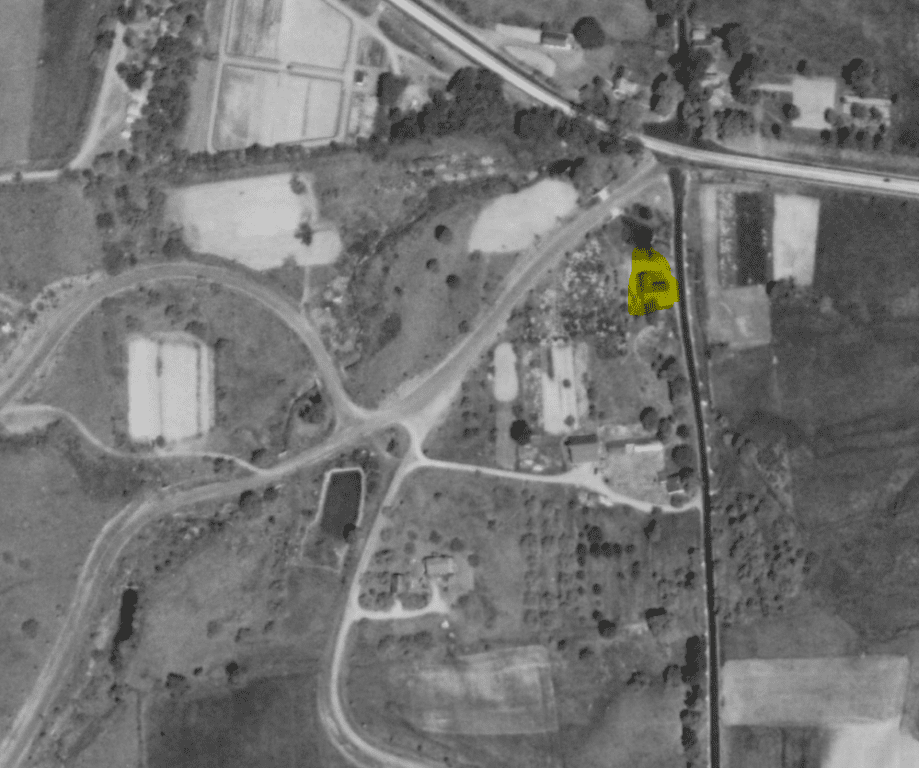
Aerial view of the Mountain Farms tract at the southwest corner in 1934, the old creamery building is highlighted in yellow. Courtesy image
When I was originally reading up on the business, I assumed that it was torn down at some point. However, after some digging, I came to the amazing realization that the Highland Creamery building is still standing today at 5 Old Oak Road, which faces Mountain Road.
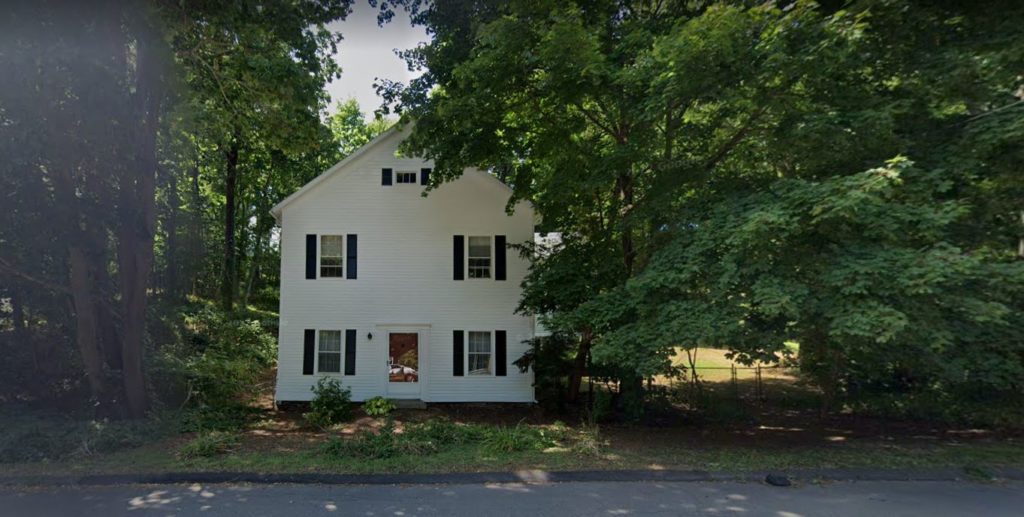
5 Old Oak Road, the former Highland Creamery building. Photo Credit: Google Street View
One important piece I’d like to touch on is the source of the old photo. I originally saw this in a Facebook post by Ray Petersen in January 2016. He had recently purchased a few photos, of which this was included, from an ephemera dealer at Papermania in Hartford. It may be the only one of its kind out there. It is a testament to how important it is when history is not just shared, but preserved. The most important part of sharing the history is making sure it’s there to exist in the first place. Re-visiting this photo after about seven more years of local historical research under my belt has put it in a new light and can help us more appreciate the rich character of every single neighborhood and the people that helped shape it.
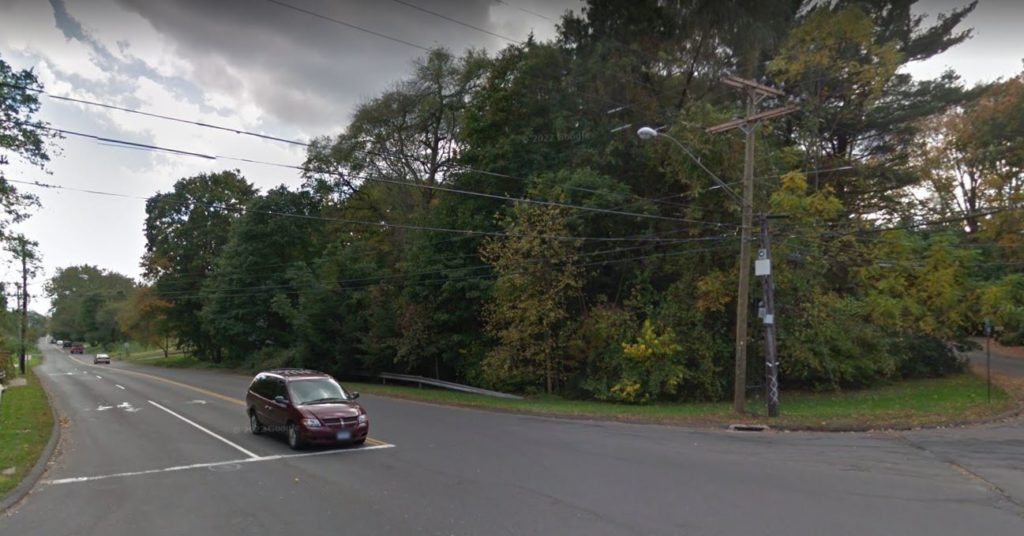
Southwest corner of Mountain Road and Albany Avenue. Photo credit: Google Street View
Jeff Murray was born and raised in West Hartford and has been involved with the Noah Webster House & West Hartford Historical Society since 2011 when he was a high school student and won the Meyer Prize for his essay on local history. Jeff routinely volunteers as local history researcher uncovering information for numerous museum programs such as the West Hartford House Tour and West Hartford Hauntings. Jeff works as a data analyst at Pratt & Whitney.
Like what you see here? Click here to subscribe to We-Ha’s newsletter so you’ll always be in the know about what’s happening in West Hartford! Click the blue button below to become a supporter of We-Ha.com and our efforts to continue producing quality journalism.


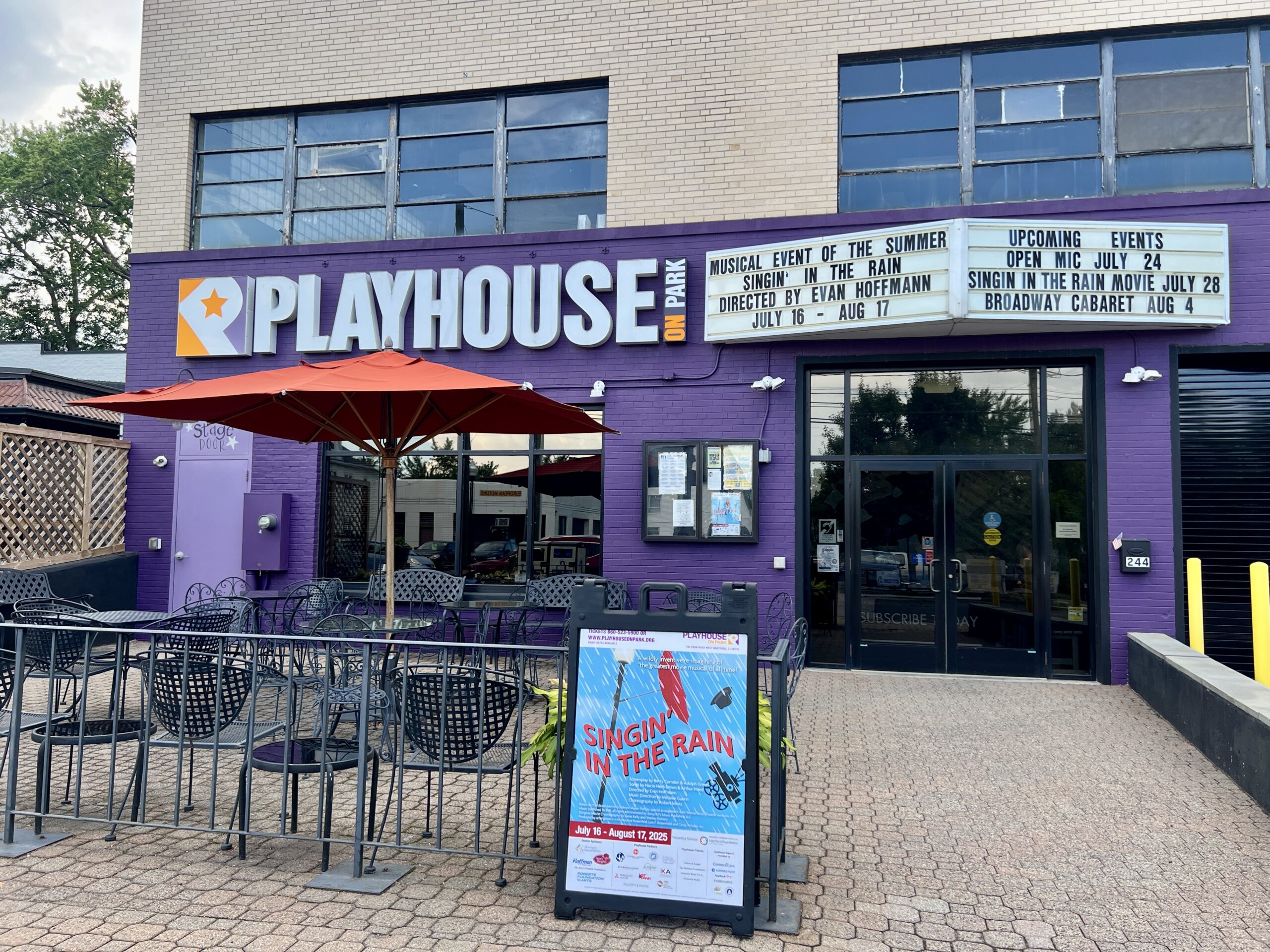
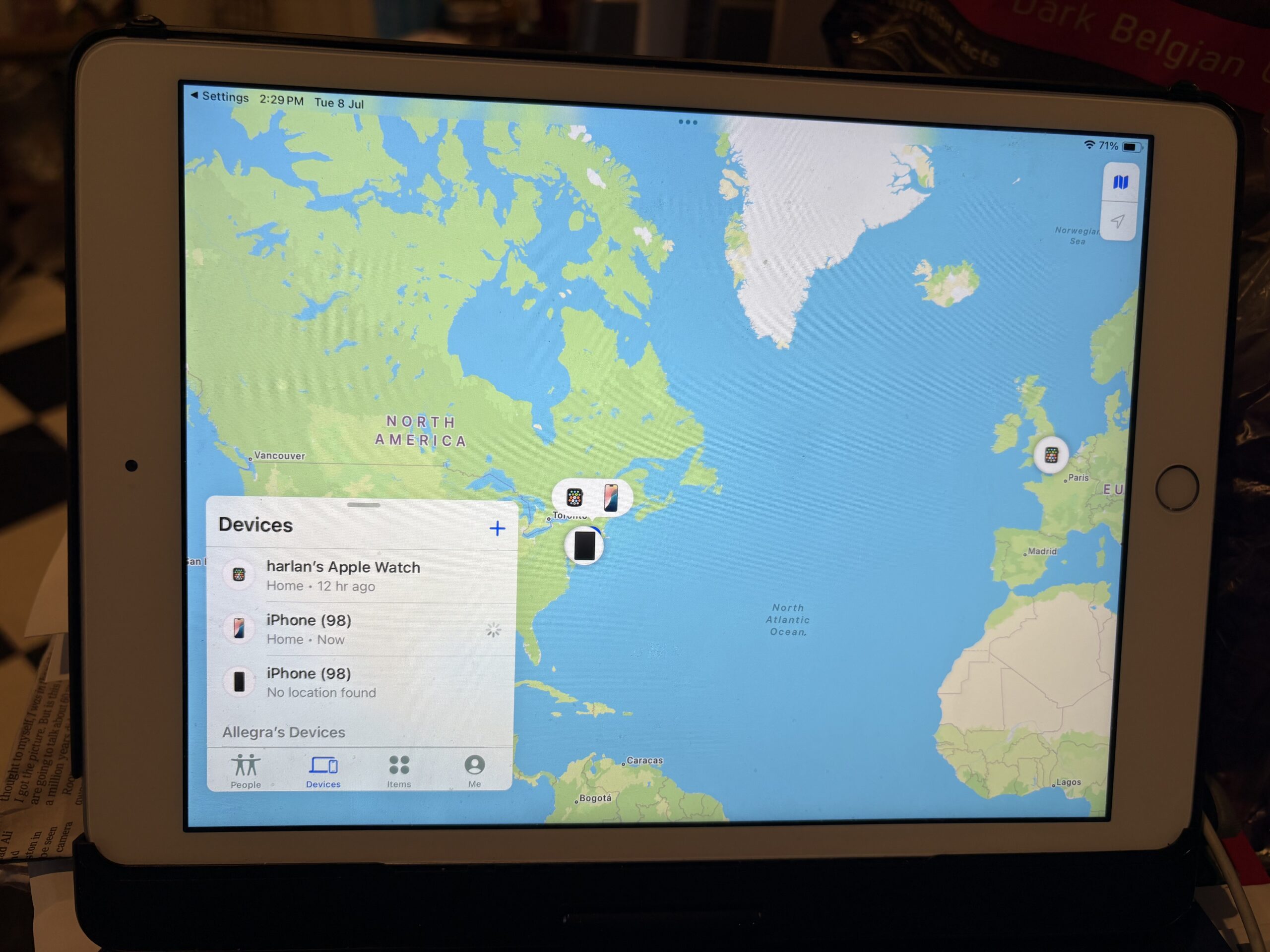
An amazing look back at a bygone era. Thank you for the research and keeping history alive.